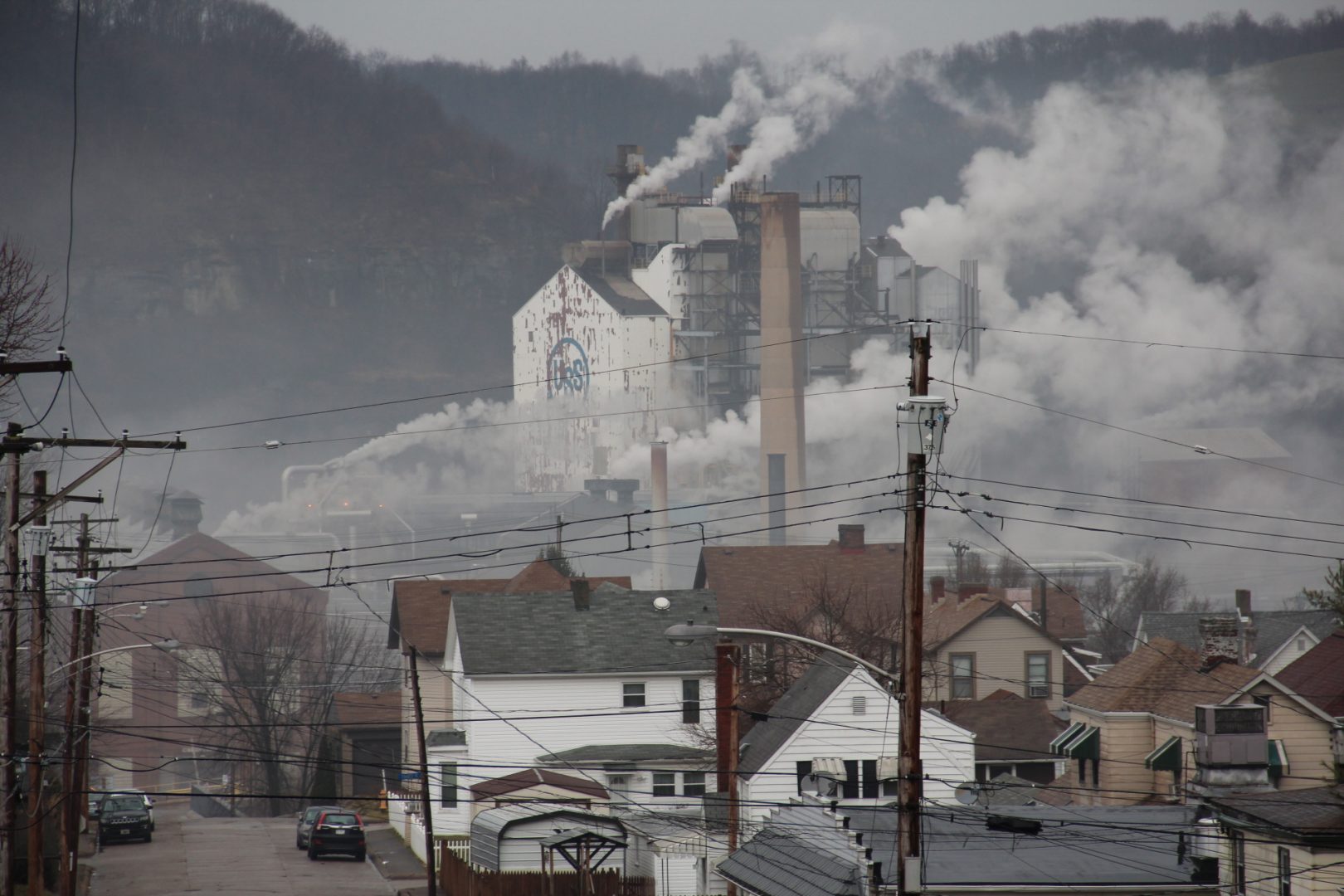
U.S. Steel's Clairton Plant, the largest coke works in North America, in Clairton, Pa.
Reid R. Frazier / StateImpact Pennsylvania


U.S. Steel's Clairton Plant, the largest coke works in North America, in Clairton, Pa.
Reid R. Frazier / StateImpact Pennsylvania

Reid R. Frazier / StateImpact Pennsylvania
U.S. Steel's Clairton Plant, the largest coke works in North America, in Clairton, Pa.
Pennsylvania’s environmental regulator wants to be a better resource for disadvantaged communities with a historically high pollution burden.
It hopes to release a draft of its new environmental justice policy next year.
Environmental justice areas include low-income neighborhoods and communities of color that shoulder more than a typical share of climate and environmental risks that can affect people’s health.
The Department of Environmental Protection recognizes those areas as ones where at least 20 percent of the population lives in poverty or 30 percent are non-white minorities. There are no additional regulations for polluting facilities there.
Allison Acevedo, director of the agency’s Office of Environmental Justice, said they’re working on an internal policy to better guide oversight in those areas.
“We’re trying to think of ways to both have some accountability and provide additional supports to communities,” Acevedo said.
Part of that is posting a list of “trigger permits,” so people in affected areas can see when a company plans to move in.
The office plans to work with an academic partner to fine-tune the definition of an EJ area.
“We want to think about other environmental and environmental health and demographic factors,” Acevedo said, “Really thinking about whether or not there are any PA-specific data points that we may use.”
The office will also create a map to more easily see those indicators.
It will revise its approach every five years in a strategic plan.
Acevedo said she hopes to have more specifics on how the public can weigh in on the policy in 2022.
In October, Gov. Tom Wolf signed an executive order formalizing the Office of Environmental Justice and making its work more of a priority within DEP.
StateImpact Pennsylvania is a collaboration among WITF, WHYY, and the Allegheny Front. Reporters Reid Frazier, Rachel McDevitt and Susan Phillips cover the commonwealth’s energy economy. Read their reports on this site, and hear them on public radio stations across Pennsylvania.
(listed by story count)
StateImpact Pennsylvania is a collaboration among WITF, WHYY, and the Allegheny Front. Reporters Reid Frazier, Rachel McDevitt and Susan Phillips cover the commonwealth’s energy economy. Read their reports on this site, and hear them on public radio stations across Pennsylvania.
Climate Solutions, a collaboration of news organizations, educational institutions and a theater company, uses engagement, education and storytelling to help central Pennsylvanians toward climate change literacy, resilience and adaptation. Our work will amplify how people are finding solutions to the challenges presented by a warming world.